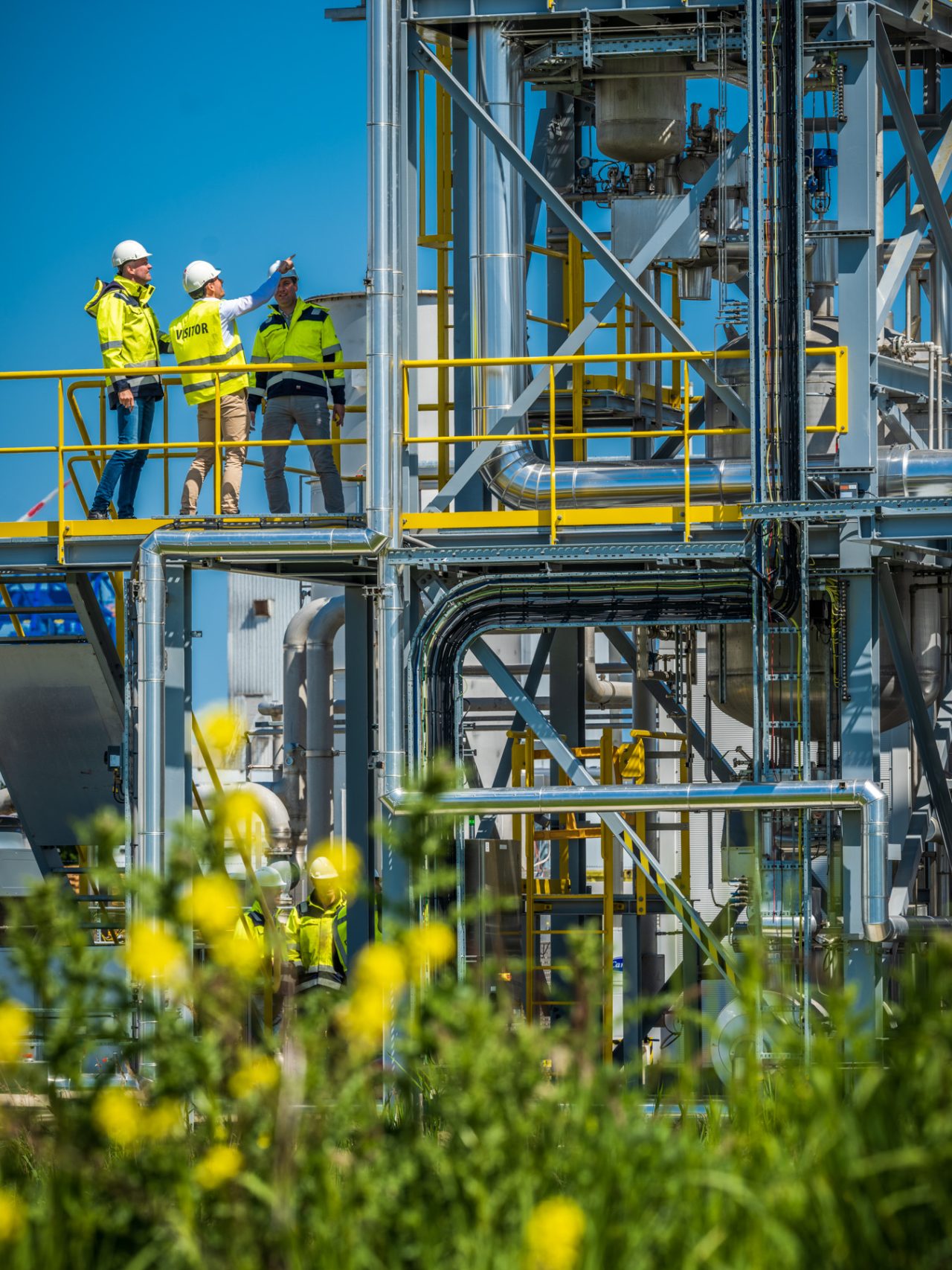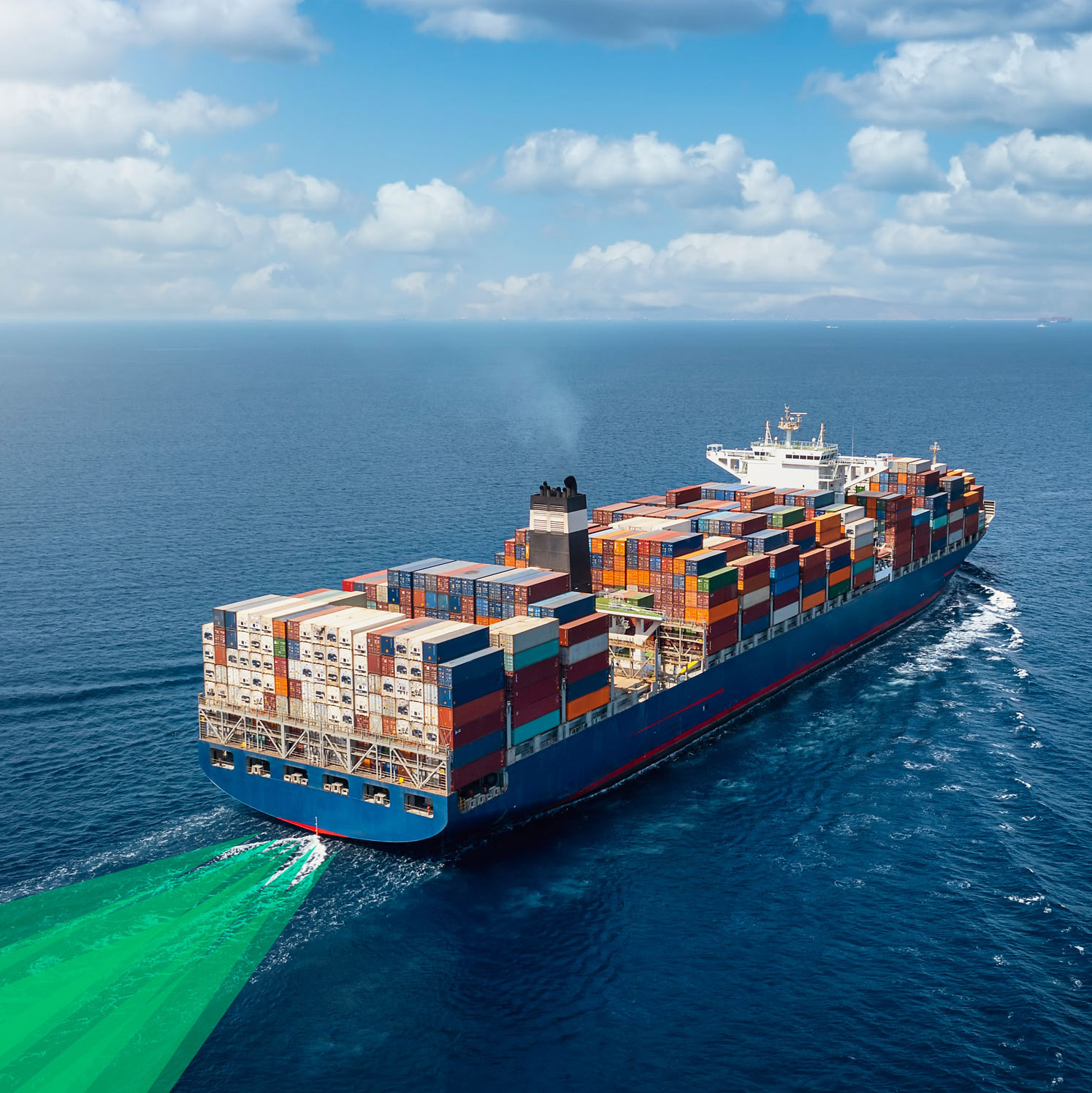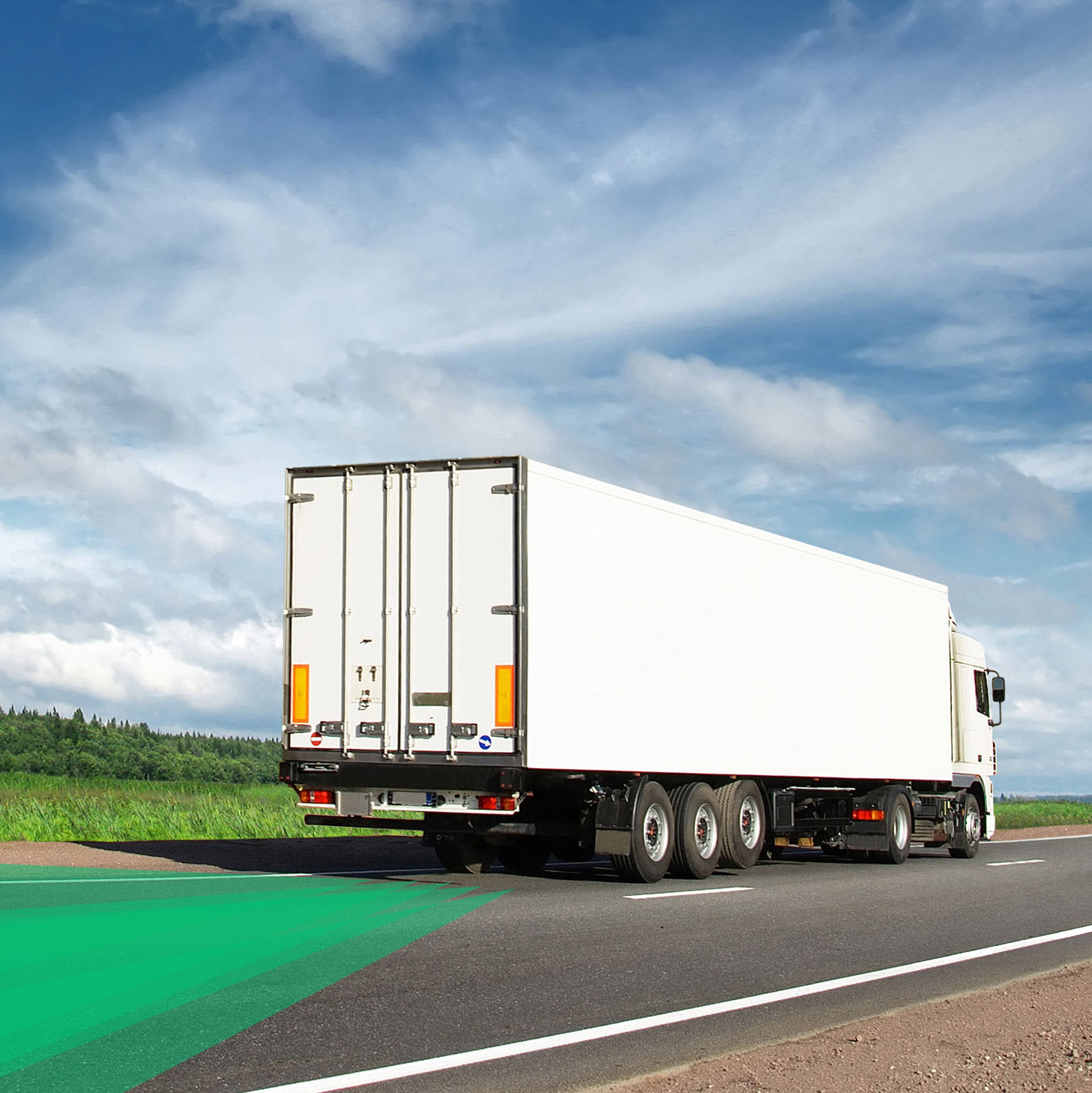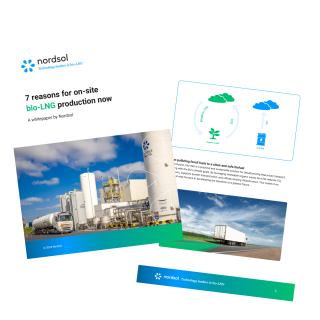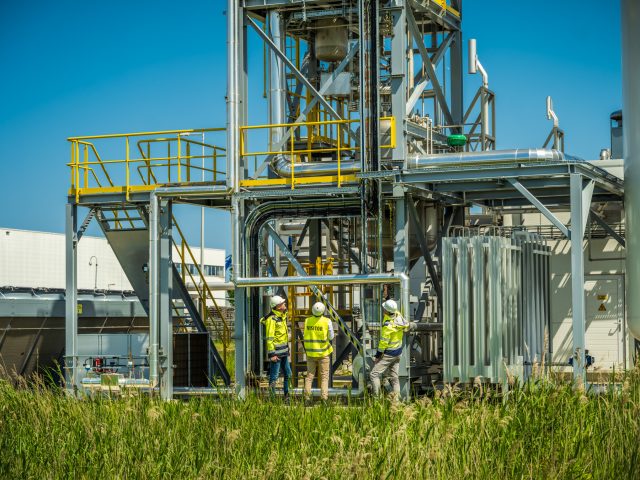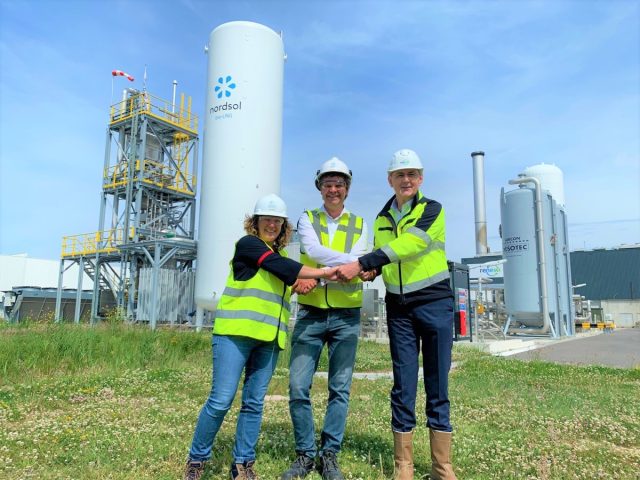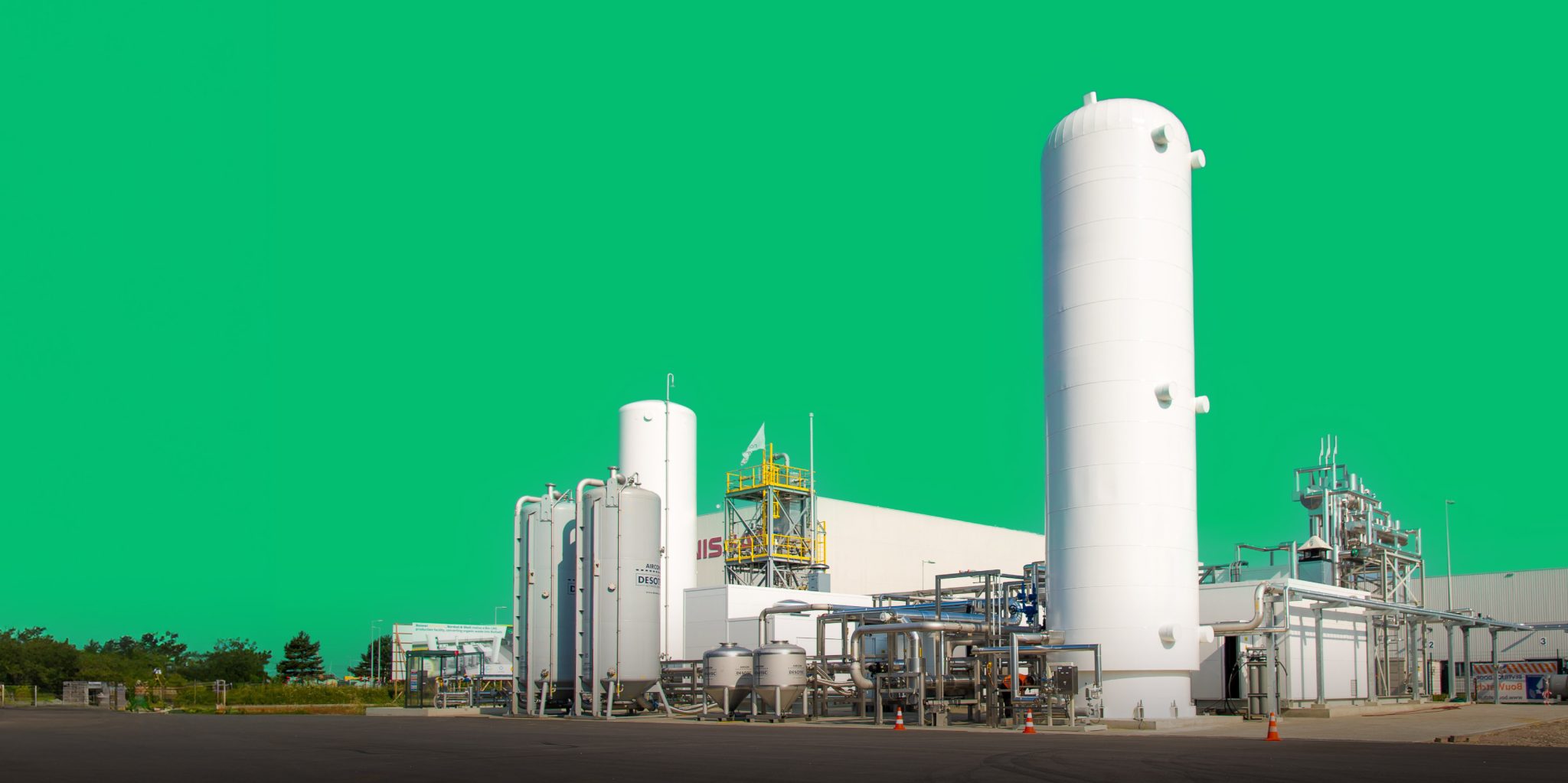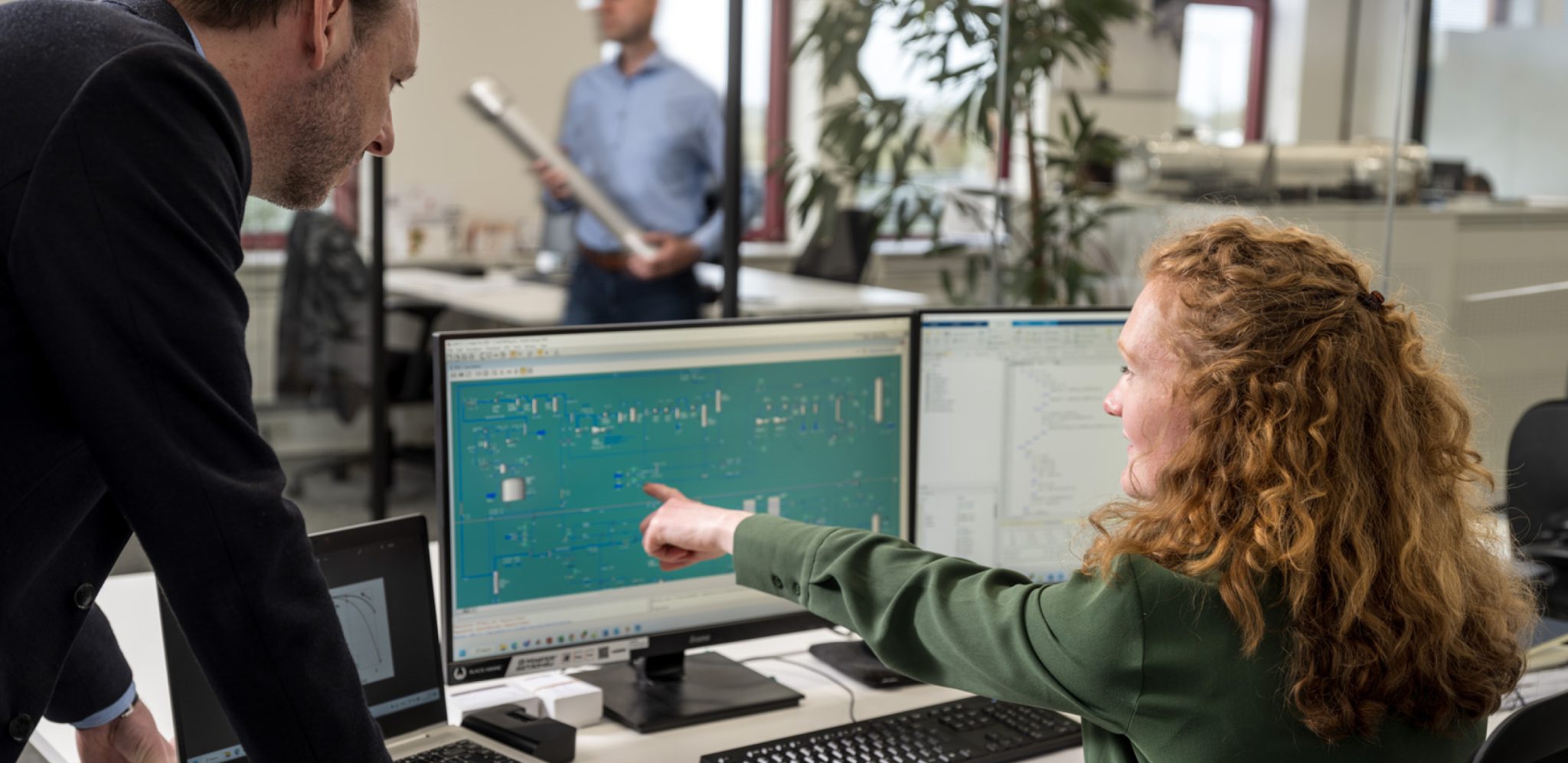Bio‑LNG is now! It's the solution for maritime and long‑haul road transport. Nordsol leads the way with cutting‑edge technology to convert your biogas into bio‑LNG. It boasts the lowest CO₂ emissions in the industry, making it a frontrunner in reducing environmental impact. This results in the cleanest product ‑ bio‑LNG of the highest quality.
Premium bio‑LNG with our proven technology
Small scale, decentralized production
While large-scale fossil LNG production has been a longstanding technology, the game changes when it comes to small-scale, decentralized production of bio‑LNG from biogas. Decentralized production allows for more flexible and localized energy solutions.
Bio‑LNG can be produced and used within close proximity, reducing transportation costs and emissions, and supporting local economies. Moreover, it aligns with circular economy principles by efficiently using local waste. Nordsol’s bio‑LNG sites are designed to suit local conditions to reduce environmental impact.
